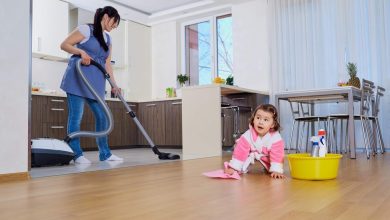How Can I Get Algae Out of My Composite Cladding?

Composite cladding is a long-lasting exterior wall cladding material that homeowners choose to cover their home’s walls. The benefits of composite cladding are numerous. For starters, composite cladding keeps moisture out of your property by preventing it from entering through the walls. Composite cladding’s insulating properties help your home’s walls survive longer. Another benefit of composite claddings is that it enhances the appearance of your property. Algae might grow on your composite cladding if you don’t keep it clean. This will result in a tense situation. As a result, algae must be removed from your composite cladding.
What Is Algae and Why Does It Grow on Composite Cladding?
Algae are tiny plants that flourish in the appropriate conditions of sunshine and moisture. Algae thrive in damp environments, which is why they thrive on wet construction materials. If you have composite cladding installed in your home and it is exposed to moist weather, algae will develop on it. When algae, particularly green algae, grows on the surface of your composite cladding, it may become an issue. It’s simple to understand how algae forms on the surface of your paneling. There’s a good probability alga will develop on your cladding if it’s in the shade and the atmosphere is wet. Also, if you don’t clean your composite cladding when it comes into touch with water, algae will form on it. It’s worth noting that algae thrive in the presence of water and sunshine.
The composite cladding includes an additional layer of plastic on its surface that prevents it from absorbing too much moisture. The patches will absorb water if there is a scratch or if the body of your cladding peels by mistake. Algae will form on your cladding if it is exposed to moisture and sunshine. All kompositmaterial are the same way. As a result, the best way to prevent algae development is to wipe the surface of your composite cladding on a regular basis. Always keep an eye out for decaying organic stuff on your cladding’s surface. If you come upon one, scrape it off right away. But what if algae have already developed on your composite cladding’s surface? Scrubbing your composite cladding with a brush and soapy water can readily remove it.
Algae on Composite Cladding and How to Get Rid of It
If you don’t remove algae soon, it might harm the longevity of your composite cladding. Aside from that, algae will deform and detract from the lovely appearance of your composite claddings. When you touch the surface of your cladding, algae will make it slippery.
Step One – Get the Materials You Require
The first step in removing algae from composite claddings is to gather all of the necessary materials. You’ll need a soft brush, a bucket, some water, and some excellent soap. You can obtain vinegar if you want to use it. A particular composite material cleanser is also available on the market. There are a variety of composite claddings cleaners available that will successfully remove algae.
Step Two – Prepare the Cleaning Agent
You may now move to mix your Komposit Beklädnad once you have obtained what you will need to clean it. The cleanser you intend to use will determine how you mix them. In a bucket, combine water and your soap or detergent until you’re happy that the combination is appropriate for the job. If you’re using vinegar, combine it with some water in a bucket. If you’re using a special composite claddings cleaner, make sure to follow the manufacturer’s mixing instructions. After you’ve finished mixing, get your brush ready for the following activity.
Step Three – Remove Algae from Composite Cladding
Spray the algae you wish to clean with the mixture you’ve made. After spraying the mixture, wait a few minutes for it to soak into the algae you want to get rid of. If you’re going to use vinegar, first sprinkle baking soda over the algae, then spray the vinegar mixture on top. After that, brush your cladding until you are certain the algae has been eliminated. We propose using a brush attached to a pole to quickly reach the top of your paneling. A long brush will also make the job go faster. Algae must be removed from the cladding.
Step Four – Clean the Composite Cladding
You should rinse your composite claddings using a water hose. Make sure you use water to clean all of the stains off your cladding’s surface. The cladding should then be allowed to dry.
Conclusion
Scrubbing the surface of your composite cladding with a brush and soapy water can eliminate algae. This is a simple maintenance job that involves very little effort on your side.




